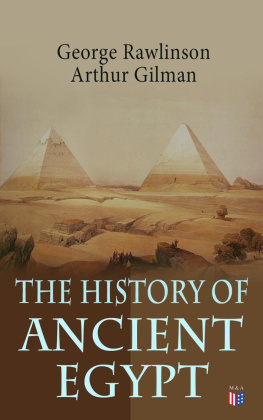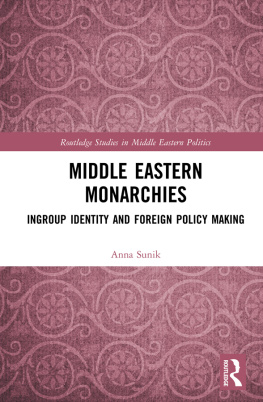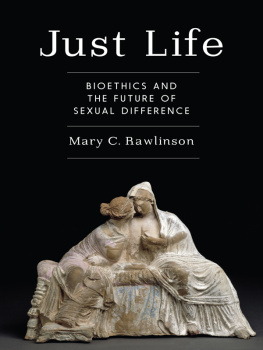CHAPTER I. EXTENT OF THE EMPIRE.
Behold, a tree in the midst of the earth, and the height thereof was great; the tree grew and was strong: and the height thereof reached unto heaven, and the sight thereof to the end of all the earth.Dan. iy. 10, 11.
The limits of Babylonia Proper, the tract in which the dominant power of the Fourth Monarchy had its abode, being almost identical with those which have been already described under the head of Chaldaea, will not require in this place to be treated afresh, at any length. It needs only to remind the reader that Babylonia Proper is that alluvial tract towards the mouth of the two great rivers of Western Asiathe Tigris and the Euphrateswhich intervenes between the Arabian Desert on the one side, and the more eastern of the two streams on the other. Across the Tigris the country is no longer Babylonia, but Cissia, or Susianaa distinct region, known to the Jews as Elamthe habitat of a distinct people. Babylonia lies westward of the Tigris, and consists of two vast plains or flats, one situated between the two rivers, and thus forming the lower portion of the Mesopotamia of the Greeks and Romansthe other interposed between the Euphrates and Arabia, a long but narrow strip along the right bank of that abounding river. The former of these two districts is shaped like an ancient amphora, the mouth extending from Hit to Samarah, the neck lying between Baghdad and Ctesiphon on the Tigris, Mohammed and Mosaib on the Euphrates, the full expansion of the body occurring between Serut and El Khithr, and the pointed base reaching down to Kornah at the junction of the two streams. This tract, the main region of the ancient Babylonia, is about 320 miles long, and from 20 to 100 broad. It may be estimated to contain about 18,000 square miles. The tract west of the Euphrates is smaller than this. Its length, in the time of the Babylonian Empire, may be regarded as about 350 miles, its average width is from 25 to 30 miles, which would give an area of about 9000 square miles. Thus the Babylonia of Nabopolassar and Nebuchadnezzar may be regarded as covering a space of 27,000 square milesa space a little exceeding the area of the Low countries.
The small province included within these limitssmaller than Scotland or Ireland, or Portugal or Bavariabecame suddenly, in the latter half of the seventh century B.C., the mistress of an extensive empire. On the fall of Assyria, about B.C. 625, or a little later, Media and Babylonia, as already observed, divided between them her extensive territory. It is with the acquisitions thus made that we have now to deal. We have to inquire what portion exactly of the previous dominions of Assyria fell to the lot of the adventurous Nabopolassar, when Nineveh ceased to bewhat was the extent of the territory which was ruled from Babylon in the latter portion of the seventh and the earlier portion of the sixth century before our era?
Now the evidence which we possess on this point is threefold. It consists of certain notices in the Hebrew Scriptures, contemporary records of first-rate historical value; of an account which strangely mingles truth with fable in one of the books of the Apocrypha; and of a passage of Berosus preserved by Josephus in his work against Apion. The Scriptural notices are contained in Jeremiah, in Daniel, and in the books of Kings and Chronicles. From these sources we learn that the Babylonian Empire of this time embraced on the one hand the important country of Susiana or Elymais (Elam), while on the other it ran up the Euphrates at least as high as Carchemish, from thence extending westward to the Mediterranean, and southward to, or rather perhaps into, Egypt. The Apocryphal book of Judith enlarges these limits in every direction. That the Nabuchodonosor of that work is a reminiscence of the real Nebuchadnezzar there can be no doubt. The territories of that monarch are made to extend eastward, beyond Susiana, into Persia; northward to Nineveh; westward to Cilicia in Asia Minor; and southward to the very borders of Ethiopia. Among the countries under his sway are enumerated Elam, Persia, Assyria, Cilicia, Coele-Syria, Syria of Damascus, Phoenicia, Galilee, Gilead, Bashan, Judsea, Philistia, Goshen, and Egypt generally. The passage of Berosus is of a more partial character. It has no bearing on the general question of the extent of the Babylonian Empire, but, incidentally, it confirms the statements of our other authorities as to the influence of Babylon in the West. It tells us that Coele-Syria, Phoenicia, and Egypt, were subject to Nabopolassar, and that Nebuchadnezzar ruled, not only over these countries, but also over some portion of Arabia.
From these statements, which, on the whole, are tolerably accordant, we may gather that the great Babylonian Empire of the seventh century B.C. inherited from Assyria all the southern and western portion of her territory, while the more northern and eastern provinces fell to the share of Media. Setting aside the statement of the book of Judith (wholly unconfirmed as it is by any other authority), that Persia was at this time subject to Babylon, we may regard as the most eastern portion of the Empire the district of Susiana, which corresponded nearly with the modern Khuzistan and Luristan. This acquisition advanced the eastern frontier of the Empire from the Tigris to the Bakhtiyari Mountains, a distance of 100 or 120 miles. It gave to Babylon an extensive tract of very productive territory, and an excellent strategic boundary. Khuzistan is one of the most valuable provinces of modern Persia. It consists of a broad tract of fertile alluvium, intervening between the Tigris and the mountains, well watered by numerous large streams, which are capable of giving an abundant irrigation to the whole of the low region. Above this is Luristan, a still more pleasant district, composed of alternate mountain, valley, and upland plain, abounding in beautiful glens, richly wooded, and full of gushing brooks and clear rapid rivers. Much of this region is of course uncultivable mountain, range succeeding range, in six or eight parallel lines, as the traveller advances to the north-east; and most of the ranges exhibiting vast tracts of bare and often precipitous rock, in the clefts of which snow rests till midsummer. Still the lower flanks of the mountains are in general cultivable, while the valleys teem with orchards and gardens, and the plains furnish excellent pasture. The region closely resembles Zagros, of which it is a continuation. As we follow it, however, towards the south-east into the Bakhtiyari country, where it adjoins upon the ancient Persia, it deteriorates in character; the mountains becoming barer and more arid, and the valleys narrower and less fertile.











